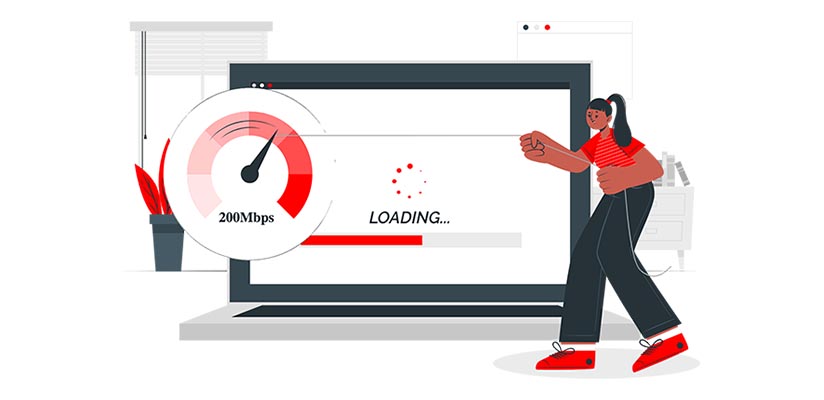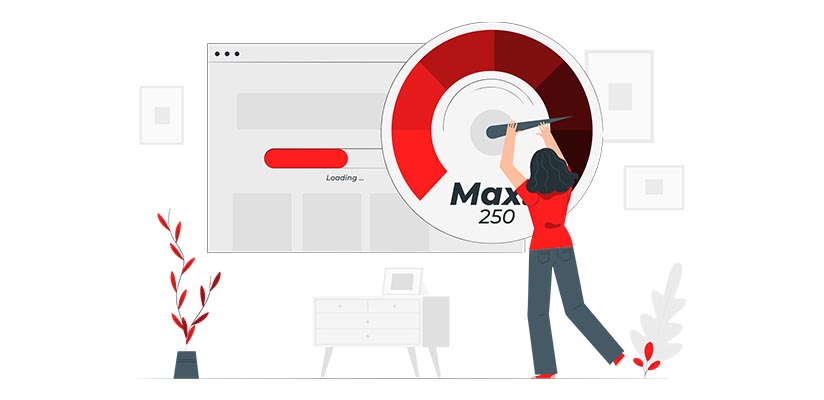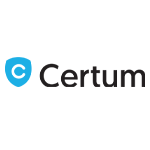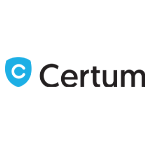
When conducting a technical audit, WordPress speed optimization is an absolute priority. People are quick to get away from websites with a slow speed of loading, however, you can use many online tools that can provide comprehensive information on your site’s speed performance.
WordPress speed optimization begins with WordPress hosting. The process isn’t too different from the method employed to optimize websites that are hosted using a shared server or dedicated server. This is why you could be able to find some of the software that is listed below, like Breeze to boost WordPress speed.
In this article, we would like to discuss how to speed up WordPress website speed. Keep in mind, there are ways how to increase a WordPress website speed without plugins but particularly in this article, we are going to talk about easy ways to reduce page load time in a WordPress website.
Why do you need to speed up WordPress?
There are a variety of reasons why alarm bells sound some of them could be triggering major issues for you:
- Google and other search engines (like Bing) rank websites that load quickly more than those with slow loading times. If you’re looking to increase your rank on the SERPs, you have to buy WordPress hosting that helps improve the speed of your website.
- Research has shown that loading times of more than 2 seconds can result in around 47 percent of users leaving the site. Therefore, in order to keep around half of your users engaged, you must reduce page load time in WordPress.
- Online shoppers are the most impatient of all They want the website to load in a matter of seconds. If you’re operating an online store using WordPress then you need to be prepared to make some major adjustments to allow your business to become more profitable.
Website Speed Is Even More Important for Mobile
The widespread use of mobile devices, as well as mobile usage, isn’t exactly newsworthy but you may not realize that speed plays an important factor in the way Google indexes mobile-related searches. If your website is slow but nevertheless strongly correlated to certain keywords and phrases, you aren’t able to get a decent ranking.
One-in-five Americans think they are “mobile-only” internet users. If you’re worried about the speed of your mobile website’s load times, you might be interested in making use of a modern WordPress theme and selecting plugins that are built around the idea of responsive design.
How Fast Should a Website Load?
What is enough? Google states that the most efficient method is to limit your loading times to 2 seconds or less. Research shows that when loading times increase between one and 2 seconds the chance of being bounced (a user leaving immediately) rises by 32%.
Additionally, for sites that take five minutes or longer in loading time, your chance of a bounce is increased by 90 percent. If you wish to keep your visitors instead of making them leave, then it is important to aim to have average loading times of no more than three seconds (and ideally, quicker than three seconds).
Core Web Vitals
Google utilizes Core Web Vitals to understand whether users leave your website happy or not, and speed of loading is an important influencer of user experience. For instance, Google will use page speed to determine whether your users are becoming frustrated by the slow loading speed and then bouncing off in a matter of seconds.
To increase the performance of your Core Web Vitals to speed up your WordPress website, you must know how it works. Core Web Vitals can be broken into three parts: the largest contentful paint, the first Input Delay, and the Cumulative Layout Shift.
LCP is a measurement of the amount of time it takes your website to load, starting from the initial click on the link until the majority of your content. It is different from other speed indicators such as TTFB due to the fact that LCP is a measure of the speed of your page from a viewpoint of the user. When you look up your LCP via Google PageSpeed Insights or your Google Search Console, you’ll be able to get an exhaustive analysis of the website elements which affect your LCP.
Range:
- From 0 to 2 seconds Good
- 3-4 seconds 3 to 4 seconds
- 5-6 seconds 5 to 6 seconds
The second vital component of Core Web is the First Input Delay, also known as FID. It measures the amount of duration it takes for the user to use your website. An interaction can be described as selecting a menu item, making a request, or looking for the product they want to purchase using Google’s search engine. Therefore, if your site is very interactive, this is an essential vital aspect of your Web to work on.
Range:
- 0 to 100ms – Good
- From 200ms up to 300ms – Needs improvements
- 400ms to 500ms – Poor
Cumulative Layout Shift is also known as CLS determines how steady your site appears as it loads. If in simpler terms, images on your site shift around as your page are loading, then you have a CLS issue that must be resolved. Google thinks that this is to be a Core Web Vital because it is confusing to see elements on a page relocate to a different place when the page is fully loaded.
Range:
- 0 to 0.1 – Good
- 0.1 up to 0.25 – Needs an improvement
- 0.25 to 0.3 – Poor
How to speed up WordPress website speed?

1. Optimize your images
Images that are too big are the most commonly cited reason for slow WordPress websites. The bigger the image files on your site more time it will take to load.
Optimizing your images is an essential step in improving your website’s speed. Optimizing involves resizing and compressing images so they can be downloaded and loaded quicker.
A good image optimization process requires two steps. First, ensure that you alter your photo prior to posting it on your website.
For this, you’ll need to decide on the location where the image is going to be used and the size that is required. It is then possible to make use of a program like Pixlr to reduce then save it at the smallest size you can. Sometimes, even changing the file type could decrease the size of an image. For instance, that jpg tends to be smaller than png files.
Then, you can install an image optimization plugin for your site We suggest Smush. It reduces the size of images when they’re uploaded which improves the speed of your website and reduces load times – but it also offers additional features for optimizing images such as lazy loading.
2. Allow caching
WordPress pages can be described as “dynamic.” This means they’re designed by hand.
In order to build your websites, WordPress has to run an analysis to gather the necessary information, then put the pieces together, and then present it to the visitor.
The process involves a variety of steps and can cause slowdowns to your site when there are many people using your site at the same time.
We recommend that each WordPress website utilize the caching plugin. Caching can help make your WordPress website anywhere from 2 to 5 times more efficient.
Caching can make your site speedy to load and more efficient, particularly when users return to your website for a third or a second time. It’s easy to add it to WordPress using a plugin for free like W3 total cache.
3. Consider mobile-first
Because Google mostly uses mobile versions of websites for their rankings, it’s essential to consider mobile-first when optimizing your website’s speed.
The most effective method of ensuring that your mobile site loads quickly loading is to use an adaptive WordPress theme. This will make sure your site is optimized and presented in the most effective way for smaller screens.
Additionally, a variety of plugins can be used to improve your WordPress site’s mobile performance. WebP Express converts your site images into webp-like versions that are super-fast and can be used on over 80% of mobile devices. Be aware that this requires you to install an image compression program on your server.
There are plugins for WordPress that are advised to improve mobile speed. It can create AMP variants of websites that load quickly on mobile devices and other devices.
4. Allow GZIP compression
With GZIP compression your website’s content is transmitted between the server you host and the user’s browsers in lighter compressed versions. This improves the speed at which browsers load and retrieve your site much quicker.
We suggest installing the WP-Optimize plugin, which comes with the GZIP compress option. The plugin can also help us with the next stage when we’ll be looking at minifying the website’s file…
5. Minimize CSS HTML as well as JS files
If you believe your Google PageSpeed score needs improving by reducing it, minimizing Cascading Style Sheet (CSS), HTML, and JavaScript (JS) files are likely to appear as a suggestion.
CSS, HTML, and JS files are used to include comments to the code of your website, for instance, to explain the style or formatting. Minification might sound like a complicated process, but in reality, it’s just a matter of shrinking the file size and eliminating any unnecessary code.
This is extremely advantageous as it allows your website to load quickly, while also preserving the essential information required to allow your website to display properly. It is possible to reduce the size of your JS, HTML, and CSS files for WordPress quickly and effortlessly using the free WP-Optimize plug-in.
6. Update plugins
The plugins you use could be slowing down the speed of your website in different ways. Poorly designed plugins, plugins using obsolete software, or redundant or duplicate plugins could all cause slow website loading.
It’s important to remember that it’s not just the amount of plugins that results in a slowdown. (That is the case unless you have a lot of plugins that perform similar things or don’t get used – in which case, the redundant ones need to be eliminated.) It’s generally the quality and effectiveness of plugins that determine the speed of your website.
It is a good idea to conduct a Google PageSpeed test prior to and following the installation of any plugin. This will let you know the impact of the application on the website’s speed, and allow you to take a shrewd decision on whether the plugin’s capabilities are worthy of any slowing down on your site.
You can also test the speed of your website is affected by the currently installed plugins, by deactivating them individually within the ‘Plugins’ part of your WordPress website’s back-end, and performing the PageSpeed test.
It is also important to update your plugins as new software becomes available. Updates will always be highlighted within your WordPress dashboard. You can check it often and click on updates to take action.
7. Clean up your database
It is possible to speed up the speed of your website by giving it a spring cleaning!
The more you utilize your WordPress website the more often your database gets clogged with unnecessary and outdated files which can slow down your website’s performance. Cleaning your database thus improves performance by eliminating unnecessary items.
It is possible to maintain your WordPress website’s database tidy through the installation of a plug-in, such as WP-Sweep and Advanced Database Cleaner. They will run in the background, ensuring that your database is updated and improving the speed of your site.
8. Select a more reliable web hosting service
The main factor that determines the speed of a site is the hosting you use for the WordPress website. It could be an ideal option to put your brand new website with an open-source hosting service that provides “unlimited” bandwidth, email, domains, and much more. However, the thing we often miss when we want to buy WordPress hosting is the fact that these shared hosting platforms do not provide good loading speeds during busy hours and many fail to provide 99 percent uptime during the course of a month.
Shared hosting typically delivers lower performance due to the fact that you share servers with many other websites. There is no way to know how many resources other sites are using. Furthermore, you do not know the exact level to which servers are optimized.
Thankfully, the industry of web hosting has grown with advancements in technology and the cost of cloud hosting services has decreased over the course of time. At present, you can buy WordPress hosting from the best WordPress hosting provider that has thought about every step of the way to boost your website in Google and other search engines.
9. Your WordPress Theme Matters
Everyone loves a brand-new WordPress theme, however, you need to be cautious before you head out and purchase the one that has all the latest features. Regarding performance, every aspect you will see in a theme can have an influence on the performance of your site. In the end, there are thousands of themes in the open, there are good and bad themes.
10. Tips on Front-End Optimization and External Services
The term “front-end” typically refers to everything that is completely handled by the browser that is on the client including CSS, JavasScript, images as well as others. This includes also analyzing the external services you’re using on your website and how they affect your load times overall.
Two of the top requirements you should be aware of in front-end optimization include:
- Reduce your website’s dimensions. The size of your CSS, JavaScript, images is crucial. A site with 4 MB of memory will typically load much slower than a site with 1 MB.
- Reduces HTTP requests and other external services. With HTTP/2, multiple requests and responses are now able to be transmitted simultaneously via one TCP connection. This is fantastic for performance; it is also a great way to reduce HTTP requests that may aid in speeding up your WordPress website. This can also reduce the total amount of requests from outside and the services. Each of these can cause additional delays, such as DNS search results, TLS connections, and latency in the network.
Conclusion
The main benefit of reducing your site’s loading times is that it helps greatly in enhancing the experience for your site’s visitors. The same applies regardless of whether they’re making use of mobile phones or computers. In addition, it will boost your rank in SERPs. In the end, reduced bandwidth utilization of your hosting service and faster loading speed of your site for clients will be beneficial both in the short term and in the long term.










Leave a Reply